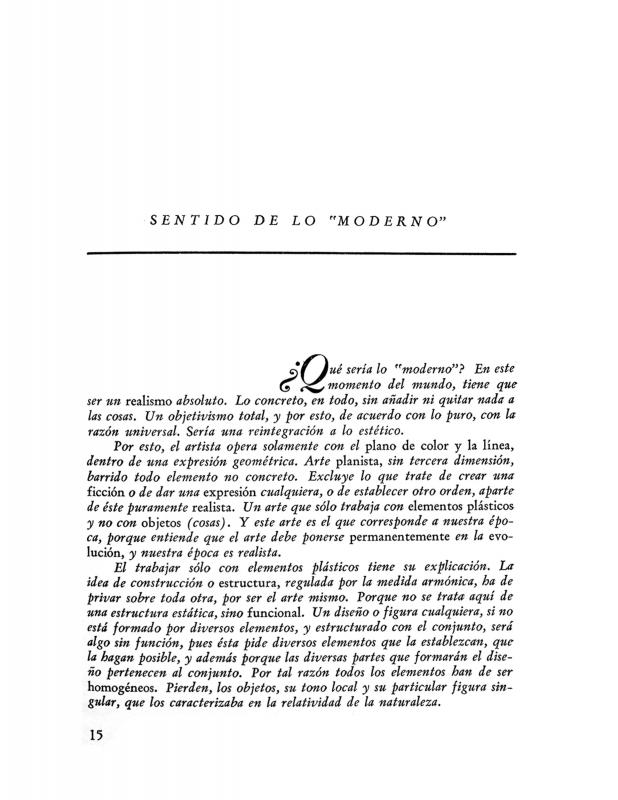After arriving in Madrid from Paris on April 21, 1933, Joaquín Torres García met the sculptor Alberto Sánchez, and visited him four days later in his studio. Sánchez introduced JTG to Benjamín Palencia and then Maruja Mallo, who visited him frequently. Meanwhile, Guillermo de Torre (a contact from the Río de la Plata region through his wife, Norah Borges) introduced JTG to the painters Francisco Mateos, José Moreno Villa, and Antonio Rodríguez Luna, whom the Spanish writer considered to be one of the most talented young painters in Spain at the time. By mid-1933 JTG had established a fairly large network of artists living in Madrid. He collected their work and reflections in a series of documents called Guiones which were published in July 1933. These “scripts” were written in the form of a glossary that was begun in Paris in 1930 and continued in Madrid. They are described as an aide-memoir of the basic ideas explored by JTG and the artists in his group. The main artists who were part of this network were the sculptors Alberto Sánchez and Eduardo Díaz-Yepes, and the painters Luis Castellanos, Maruja Mallo, Francisco Mateos, José Moreno Villa, Manuel Ángeles Ortiz, Benjamín Palencia, and Antonio Rodríguez Luna. JTG presented this group’s work—as well as some of his own and sculptures by the Spaniard Julio González and the Mexican Germán Cueto, both of whom were living in Paris at the time—at an exhibition called Grupo de Arte Constructivo at the Salón de Otoño in 1933. This group was originally envisioned as a workshop for reflections on art, and the exhibition was the Uruguayan maestro’s way of presenting the group’s ideas in public.
In another, later article about this group, written in November 1933, JTG describes his cautious approach as he sought to introduce his constructivist ideas to an environment that was relatively “hostile” to the style’s rules, geometry, and rational methodology. Rejection was real and understandable in conservative Spanish art circles, despite the restrained reception to Prince Matila Ghyka’s book (published in French in 1927). After the exhibition the workshop-group focused on a series of five “lessons” presented as lectures by JTG in October and November, and was finally disbanded. One of the lessons consisted of a reading of “El mito del Hombre Abstracto” [The Myth of the Abstract Man]. JTG kept using the Guiones in Montevideo in 1934 and beyond, in his first lessons to the Asociación de Arte Constructivo, at the Estudio 1037.
[As complementary reading see, in the ICAA digital archive, the following articles written by Joaquín Torres García: “Guiones Nº 1” (doc. no. 1238837); “Guiones Nº 2” (doc. no. 1238853); “Con respecto a una futura creación literaria” (doc. no. 730292); “Lección 132. El hombre americano y el arte de América” (doc. no. 832022); “Mi opinión sobre la exposición de artistas norteamericanos: contribución” (doc. no. 833512); “Nuestro problema de arte en América: lección VI del ciclo de conferencias dictado en la Facultad de Humanidades y Ciencias de Montevideo” (doc. no. 731106); “Introducción [en] Universalismo Constructivo” (doc. no. 1242032); “Sentido de lo moderno [en Universalismo Constructivo]” (doc. no. 1242015); “Bases y fundamentos del arte constructivo” (doc. no. 1242058); and “Manifiesto 2, Constructivo 100%” (doc. no. 1250878)].










